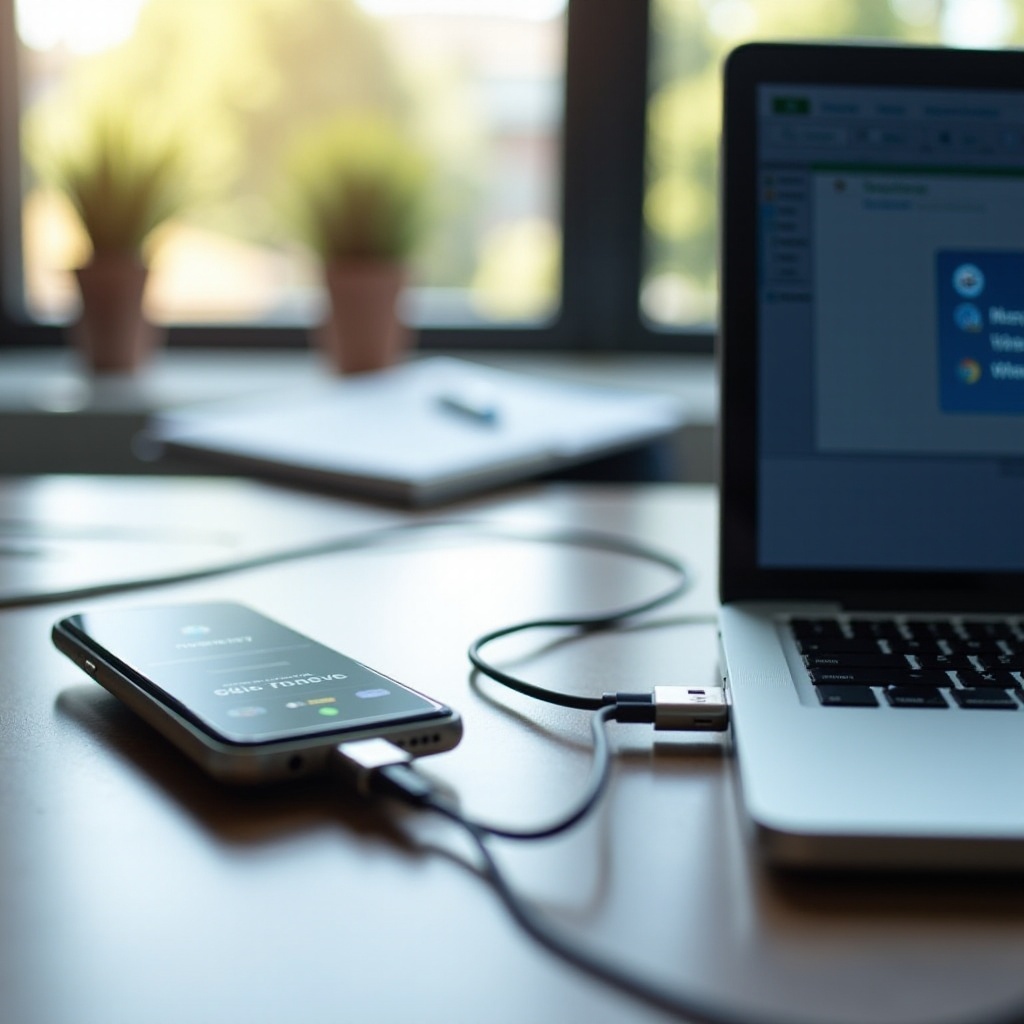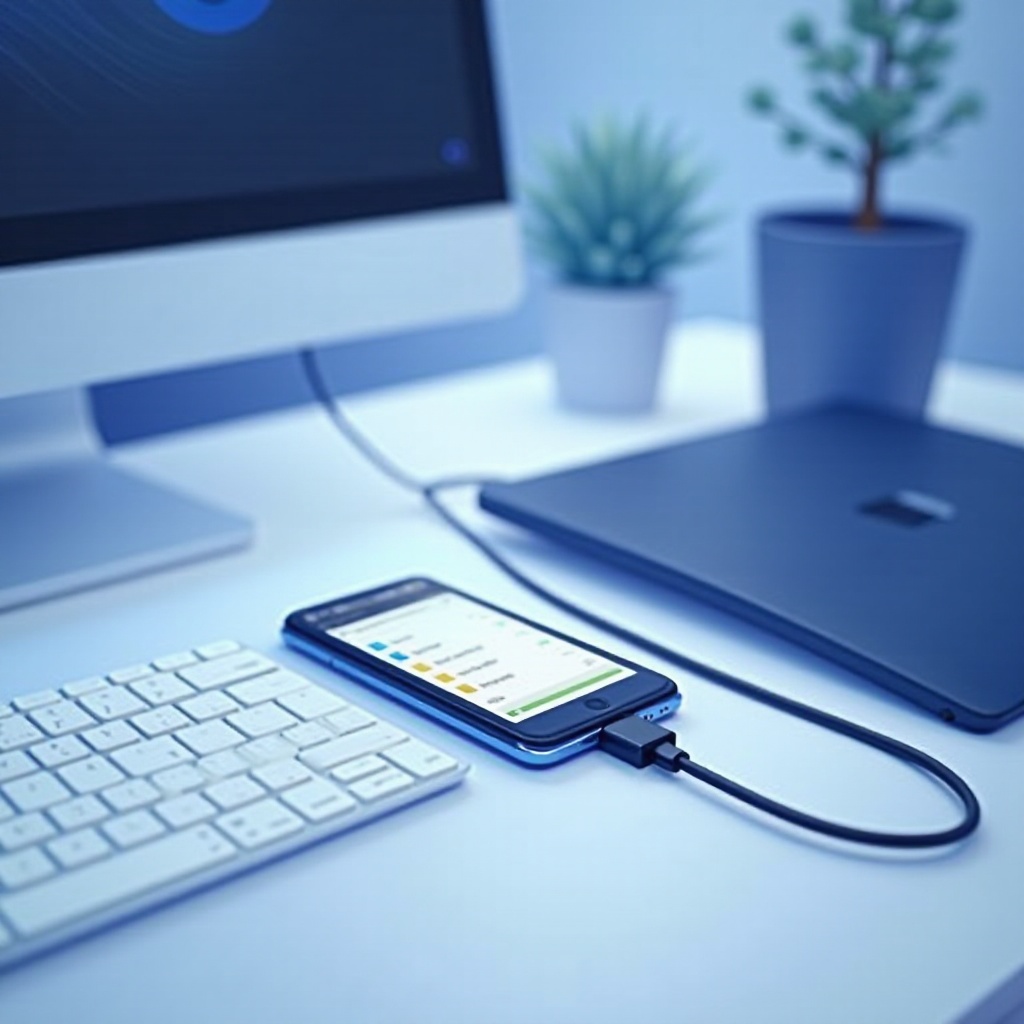Introduction
Using your phone as a USB flash drive is increasingly relevant in today’s tech-savvy world. As our smartphones evolve, they are becoming more than just communication devices, offering capabilities akin to traditional storage solutions. This guide delves into the possibility of using your phone as a USB flash drive, uncovering various options across different operating systems. We’ll examine the necessary tools, the steps to implement this transformation, and essential security tips. Embrace an efficient and collaborative way to handle data transfers with your smartphone.

Understanding Your Phone’s Storage Capabilities
Before diving into using your smartphone as a USB flash drive, it’s crucial to be aware of its storage capabilities. Smartphones today come equipped with storage varying from 32GB to 1TB, often with the option for expansion via external SD cards. Understanding your phone’s storage constraints helps manage data more effectively and ensures compatibility with USB functionalities. Recognizing these attributes prepares you for the practical steps of using your phone as portable storage.

How to Use Your Android Phone as a USB Flash Drive
Android phones provide a relatively uncomplicated route for use as a USB flash drive, benefiting from flexible configurations in both hardware and software.
Required Tools and Compatibility
- USB Cable: Have a compatible USB cable at your disposal.
- Android Version: Ensure your Android version supports USB mass storage.
- File Management App: Use a file management app if your device doesn’t include one.
Step-by-Step Guide
- Connect your phone to a computer using the USB cable.
- When prompted, select ‘File Transfer’ or ‘USB Mass Storage’.
- Your phone will now be available as a storage device on the computer.
- Transfer files by dragging and dropping as needed.
Best Practices for Android Devices
- Always use certified cables for reliable connections.
- Check ‘Developer Options’ for compatibility settings.
- Ensure all security permissions for data transfers are in place.
By understanding Android’s adaptability, iPhone users can explore their unique options despite certain limitations.
Using an iPhone as a USB Flash Drive: What You Need to Know
Utilizing an iPhone in this manner involves navigating Apple’s tightly controlled ecosystem. However, with specific tools, it’s achievable.
Limitations and Workarounds
iPhones face more restrictions than Android devices due to Apple’s security protocols, which limit file system access. Despite this, workarounds such as third-party apps and cloud solutions facilitate data transfers.
Recommended Apps and Software
- iMazing or AnyTrans: Apps designed for file management.
- Documents by Readdle: A versatile file management app.
- An iTunes installation might be needed for Windows recognition.
Security Considerations for iOS Users
- Download apps solely from the Apple App Store.
- Ensure your device has the latest updates for security.
- Encrypt sensitive data to maintain privacy during transfers.
These strategies show how iPhone users can still effectively use their devices for data transfers.
Advantages and Drawbacks of Using a Phone as a USB Flash Drive
Transforming your smartphone into a USB drive presents both benefits and potential issues.
Advantages:
- Convenience: Fewer devices to carry.
- Flexibility: Easy platform-spanning access to files.
- Efficiency: Simplified data management without extra software.
Drawbacks:
- Battery Usage: Extended use can quickly drain the battery.
- Compatibility Issues: Feature support varies by device.
- Potential Wear: Constant use risks degrading hardware or storage.
Considering these aspects, it’s essential to address frequent troubleshooting scenarios.
Troubleshooting Common Issues
Problems can surface when using your phone as a USB flash drive, but they’re usually simple to resolve.
Connection Problems
- Use a working cable to connect devices.
- Restart devices for unstable connections.
- Inspect ports and plugs for any damage.
Device Recognition
- Confirm your phone is in the correct mode for data transfer.
- Update computer drivers if your phone isn’t recognized.
- Allow your computer the necessary access permissions.
Data Transfer Errors
- Check available storage space.
- Ensure files aren’t corrupted.
- Verify file settings with a manager for hidden or protected files.
These insights into troubleshooting pave the way for protecting your data and device.
Security Tips for Using Your Phone as a Storage Device
Security should always be a priority when using smartphones for storage and data transfer.
- Password Protection: Use strong passwords to lock your device.
- Secure Apps: Choose apps with encryption capabilities.
- Frequent Backups: Regularly back up data to ensure recovery in case of loss or compromise.
- Update Firmware: Stay updated to mitigate vulnerabilities.
Implement robust security practices to shield your data from unauthorized access and breaches.

Conclusion
Mastering your phone’s capabilities and following correct procedures allows you to use smartphones as USB drives effectively. Android and iPhone users possess tailored strategies aiding this transformation. Weighing both the benefits and security tips ensures the practicality of this transition while preserving the long-term health of your device and data integrity.
Frequently Asked Questions
Can I use any phone as a USB flash drive?
No, not all phones support this feature; it depends on the device’s operating system and compatibility.
Do I need special cables or adapters for this?
Typically, a standard USB cable is sufficient, but always confirm with your device’s requirements as proprietary cables may sometimes be necessary.
Are there risks involved in using my phone this way?
Yes, there might be risks such as data corruption, potential security breaches, and hardware wear if not managed correctly. Protect your device and data by following security best practices.
